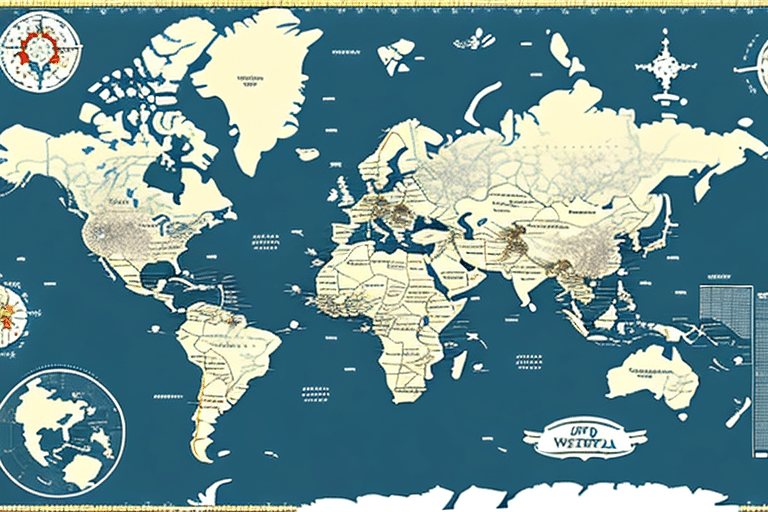Understanding Shipping Rates: Published vs. Negotiated
Choosing the right shipping rate is crucial for businesses aiming to optimize their logistics and control costs. This article explores the differences between published rates and negotiated rates in UPS Worldship Export Maps, helping you make informed decisions based on your shipping needs.
Published Rates Explained
Published rates are standard shipping prices set by carriers like UPS. These rates are publicly available and are determined by factors such as package weight, shipping distance, and delivery speed. Published rates are accessible to all users through carriers' online platforms and shipping software, providing a transparent and straightforward pricing structure.
Negotiated Rates Explained
Negotiated rates, on the other hand, are customized pricing agreements between a shipper and a carrier. These rates are typically based on the shipper's shipping volume, frequency, and specific shipping requirements. Negotiated rates often offer substantial discounts for high-volume shippers, making them a cost-effective option for businesses with consistent shipping needs.
Key Differences Between Published and Negotiated Rates
- Accessibility: Published rates are available to all users, while negotiated rates require a specific agreement with the carrier.
- Cost: Negotiated rates can offer lower prices for high-volume shippers compared to the standard published rates.
- Flexibility: Published rates are fixed and predictable, whereas negotiated rates can be tailored to meet specific shipping needs.
Advantages and Disadvantages of Published Rates
Deciding between published and negotiated rates involves weighing the benefits and drawbacks of each option.
Advantages of Published Rates
- Transparency: Published rates provide a clear and straightforward pricing structure, making it easy to understand shipping costs.
- Accessibility: Any business can access published rates without the need for volume-based agreements.
- Predictability: With fixed rates based on weight and distance, businesses can easily budget their shipping expenses.
Disadvantages of Published Rates
- Higher Costs for High Volume: Businesses that ship large volumes may find published rates more expensive compared to negotiated rates.
- Limited Customization: Published rates may not cater to specific shipping needs or variations in package sizes and destinations.
- Rate Fluctuations: Published rates can change based on carrier pricing adjustments, potentially impacting budget planning.
Setting Up Published Rates in UPS Worldship Export Maps
Implementing published rates in UPS Worldship Export Maps is a straightforward process. Follow this step-by-step guide to get started:
- Open UPS Worldship Export Maps and navigate to the "Shipping" tab.
- Select "Preferences" from the dropdown menu.
- Under "Shipment Preferences," click on "Edit."
- Choose the desired "Service Type" for your shipment (e.g., UPS Ground).
- Next to "Rate Source," select "Published Rates" or "Daily Rates."
- Based on your shipment's weight, distance, and delivery timeframe, select the appropriate published rate.
- Finalize the shipment details and click "Process Shipment" to complete.
It's advisable to compare published rates with negotiated rates periodically to ensure you're leveraging the most cost-effective option for your shipping needs.
Best Practices for Using Published Rates
To maximize the benefits of published rates, consider the following best practices:
- Regularly Review Rates: Shipping rates can fluctuate, so it's essential to monitor published rates regularly to take advantage of any favorable changes.
- Combine with Negotiated Rates: Use published rates for lower-volume shipments and negotiate rates for high-volume needs to balance cost and flexibility.
- Utilize "Ship To" Addresses: Save frequently used destinations in UPS Worldship Export Maps to streamline the shipping process and reduce manual entry errors.
Choosing the Right Published Rate for Your Shipments
Selecting the appropriate published rate involves evaluating several factors to ensure cost-effectiveness and meeting delivery requirements.
Factors to Consider
- Package Weight: Heavier packages generally incur higher shipping costs.
- Destination: Shipping internationally or to remote areas may be more expensive than domestic shipments.
- Delivery Timeframe: Faster delivery services, such as expedited shipping, typically cost more than standard options.
Comparing Different Carriers
While this guide focuses on UPS, it's beneficial to compare published rates across multiple carriers like FedEx and DHL to ensure you're selecting the most competitive option for your business needs. Tools like the FedEx Rate Finder can assist in this comparison.
Optimizing Shipping Costs with Published Rates
Strategic use of published rates can lead to significant cost savings and improved shipping efficiency.
Utilizing Historical Data
Analyzing past shipping data can help identify patterns in volume and destinations, enabling you to choose the most cost-effective published rates. Tools like UPS Supply Chain Insights offer valuable analytics for this purpose.
Expert Strategies
Consulting with shipping experts or logistics consultants can provide tailored strategies to optimize your use of published rates. They can offer insights into market trends and advise on the best practices for your specific business context.
Troubleshooting Common Issues with Published Rates
Even with a well-planned approach, issues may arise when using published rates. Here's how to address some common problems:
- Unexpected Rate Increases: Verify shipment details such as weight and dimensions to ensure accuracy. If discrepancies persist, contact UPS customer support for clarification.
- Shipment Delays or Losses: In case of delays or lost packages, reach out to UPS customer service to initiate an investigation and seek resolution.
- Rate Unavailability: If a published rate isn't available for your shipment, consider alternative services or explore the possibility of negotiating a custom rate with UPS.
The Impact of Published Rates on Your Shipping Budget
Adopting published rates can significantly influence your shipping budget, especially for businesses with fluctuating shipping volumes. While published rates offer predictability and ease of budgeting for smaller or irregular shipments, large-volume shippers may find negotiated rates more economical. Regularly reviewing and comparing both rate types ensures optimal budget management.
Future Trends in Shipping Rates for E-commerce
The shipping industry is continuously evolving, with trends such as the rise of e-commerce and advancements in last-mile delivery services shaping future rate structures. Staying informed about these trends can help e-commerce businesses anticipate changes in shipping costs and adjust their strategies accordingly. For instance, the increasing demand for same-day delivery may lead to higher rates for expedited services but could also drive innovations that reduce costs over time.
By leveraging published rates effectively and staying abreast of industry developments, businesses can maintain a competitive edge in their shipping operations.






















